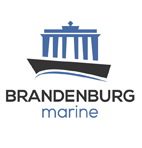Loss Prevention Advice
- Details
- News /
A guidance and preventative measures regarding bulk storage claims.
Bulk cargo shortage claims are a common yet complex issue, they usually occur when there is a significant discrepancy between the quantity of cargo noted on the Bill of Lading (B/L) and the quantity received at the port of destination.
Such discrepancies can be attributed to various factors, including inaccurate measurement of cargo, improper stowage, mishandling during transport, spillage or even theft.
- Details
- News /
A key advice for safely working at height on scaffolds, which play a crucial role in various shipboard operations.
West presents a case study where, hold maintenance was being conducted by crew members whilst the vessel was at sea. The operation was planned with the use of scaffolds to enable the crew to be able to paint hard to reach parts of the hold. A toolbox talk had been conducted and the necessary risk assessments and permits to work aloft had been completed prior to the commencement of maintenance. The scaffolding was assessed to be in an otherwise very good condition prior to commencing the work.
- Details
- News /
A circular informing about the guidelines for handling and transporting Direct Reduced Iron (DRI).
Direct reduced iron (DRI) is formed by passing hot reducing gases, such as hydrogen, methane and carbon monoxide, over iron ore, which is usually in the form of lumps or pellets. This produces a highly porous iron material which has a very large internal surface area available for re-oxidation. The principal hazards associated with DRI are its ability to undergo self-heating through oxidation and its ability to generate hydrogen from reaction with water/moisture. When stowed within the confines of a cargo hold, hydrogen produced by reaction with water can form an explosive atmosphere inside the hold, presenting a risk of explosion.
- Details
- News /
A guide on shuttle tankers, offering comprehensive recommendations to ensure safe, flexible, and efficient operations, including detailed fire safety guidelines.
As explained, engine room fires are one of the major hazards on oil tankers. To prevent and reduce the consequences of an engine room fire, requirements related to oil systems, as well as thermographic scanning of hot surfaces on engines and other hazardous objects, ensure that the ship is delivered and operated in a safer condition than a standard ship. Independent main fire extinguishing systems and fixed gas fire extinguishing systems for the main switchboard space (if not part of the main engine room) provide additional safety beyond SOLAS requirements.



